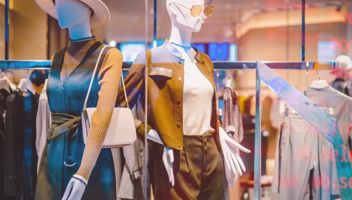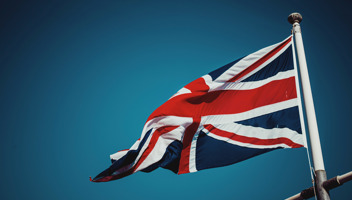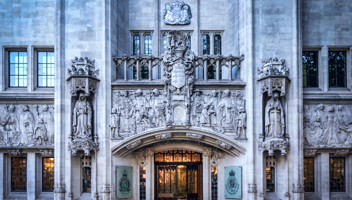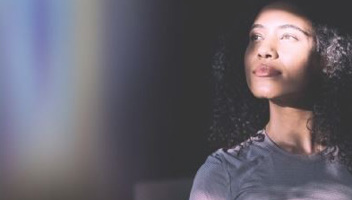In the midst of a global pandemic, the question of what images you can and can’t use on your website might seem rather trivial.
However, using images on your website without permission from the copyright holder can land you in hot water – and on the receiving end of a substantial damages claim.
Advances in automated web searching or web crawling technology means that rights holders can monitor infringement of their works 24/7, even during this pandemic.
In the second part of this series of blogs, we will take a look at some common misconceptions surrounding the defences to copyright infringement. The first blog in this series can be accessed here.
“I didn’t know that the image was protected by copyright. Can I use this as a defence?”
People often wrongly assume that the images displayed in a Google Images search are not protected by copyright, particularly where they don’t contain a watermark.
When confronted with a claim for copyright infringement, many infringers are quick point to the defence in section 97(1) of the Copyright, Designs and Patents Act 1988 (the “1988 Act”). This provides that if the infringer “did not know or have reason to believe that copyright subsisted in the work to which the action relates”, the copyright owner is not entitled to damages against them.
At first blush, you might be forgiven for thinking that this is a “get out of jail free” card for infringers. However, the defence in section 97(1) only applies where it is reasonable for the infringer to assume that the work is not protected by copyright.
In the case of Nottinghamshire Healthcare National Health Service Trust v News Group Newspapers Ltd, the Sun newspaper published a photograph of a patient, Laith Alani, at Rampton Hospital in Nottinghamshire. Mr Alani had been a patient at the hospital for a number of years following his conviction for the killing of two plastic surgeons. The hospital claimed that it was the owner of the copyright in the photograph in question and therefore that the Sun has infringed copyright by publishing it without consent.
In his judgment, Mr Justice Pumfrey discussed the application of the section 97(1) defence in relation to photographs:
“This is a very limited defence. It goes only to the defendant’s knowledge, whether copyright subsisted in the work. It is only available if on the facts it is reasonable to suppose that copyright did not subsist in the work. As a practical matter, this can only be the case where the work is old, or is of such a nature that copyright is unlikely to subsist in it. It is not available in the case of a photograph, for example, unless that photograph is very old (it subsists for the life of the author and 70 years in addition).”
Images of the kind produced by commercial photographers almost always benefit from copyright protection as original artistic works. There will be very few situations in which it would be reasonable to assume that such images are not covered by copyright. One example might be if you had reasonable grounds to believe that copyright had lapsed, such where the photograph is more than 70 years old.
Furthermore, section 97(1) is not a defence to liability for copyright infringement, only damages. This means that even if a section 97(1) defence was successful, an infringer could still be vulnerable to other remedies if found to be liable for copyright infringement, such as injunction (interdict in Scotland).
“I’ve used the image to report on current events or as part of a blog. Is that fair use?”
The defence of fair dealing is commonly invoked but often misunderstood.
At a high level, “fair dealing” refers to a group of exceptions to copyright law which permit limited use of copyright protected works without the copyright holder’s consent. The 1988 Act outlines a number of situations in which fair dealing is a legitimate defence to a claim of copyright infringement, including:
- Research or private study;
- Criticism, review or quotation; and
- The reporting of current events
One misconception is that it is “fair dealing” to use someone else’s photographs in a news article or blog without asking for permission. There are a few problems with this. Most importantly, the “reporting of current events” exception does not apply to photographs. This is to prevent newspapers or magazines from using images appearing in a competitor’s publication to report on the same event.
In relation to other exceptions, such as criticism, review or quotation, the use of the photograph must be accompanied by a “sufficient acknowledgement”. This generally means that the photographer should be credited wherever an image is used without permission, unless this would not be possible for reasons of practicality.
Before you use a photograph on your website, you should therefore carefully consider:
- How do I intend to use the photograph? If the photograph is to be used commercially, for example as a design feature of your website, or to report on current events, a licence from the copyright holder will almost certainly be required
- Do I know who the photographer is? If the photograph is being used for the purposes of criticism, review or quotation, you will need to ensure that the author is sufficiently credited.
We regularly manage infringement claims for high-profile copyright holders as well as ensuring our clients avoid getting into such situations in the first place.
If you would like more information on any of the issues covered in this article or any other aspect of intellectual property law, please do get in touch.
Related News, Insights & Events

Data Spring Webinar Series: Data Governance Demands in 2025
20/05/2025 - Online webinar
Our upcoming data webinar series will consider key data protection compliance requirements, explore data governance best practice, and highlight key areas of interest for the UK regulator (ICO).

M&S ransomware attack – what can we learn?
Discussing the recent ransomware attacks on M&S and the Co-op Group, highlighting the risks of cyber crime, potential regulatory consequences, and the importance of strong cyber security measures

Burness Paull promotes five lawyers to partner
01/04/2025
Burness Paull has promoted five of its lawyers to partner as the firm prepares for further growth in key areas and continues to invest in developing homegrown talent.





